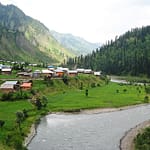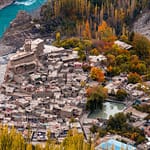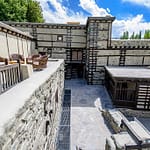Baltit Fort is a fort in the Hunza valley, near the town of Karimabad, in the Gilgit-Baltistan region of northern Pakistan. It has been on the UNESCO World Heritage Tentative list since 2004. 800-year-old Baltit fort is some of the region’s oldest standing monuments and evidence of the valley’s feudal regime.

History of Baltit fort:
The historical fort was founded in 8 century CE. It was originally built as a defensive stronghold. It later became a palace and symbol of power for the rulers of the region. Once it served as a seat of power for the hunza kingdom. Now it is know as one of the most visited monuments in Hunza Valley.
A national heritage:
Baltit Fort, located in Pakistan’s Hunza Valley, is a revered national heritage site. With its centuries-old history, architectural grandeur, and cultural significance, the fort stands as a proud symbol of Pakistan’s rich heritage. Its preservation and promotion showcase the nation’s glorious past to both locals and visitors alike, fostering a sense of national pride and appreciation for Pakistan’s cultural legacy.
Cultural significance of Baltit Fort:
Baltit Fort holds immense cultural significance as a testament to the heritage and traditions of the Hunza Valley in Pakistan. It stands as a symbol of the region’s rich history, architectural excellence, and serves as a cultural hub for promoting local traditions and customs.
A tourist hotspot:
Baltit Fort has emerged as a popular tourist hotspot in the Hunza Valley, Pakistan. Its historical significance, stunning architecture, and cultural charm attract visitors from around the world. Exploring the fort offers a unique glimpse into the region’s heritage and a memorable travel experience.
Conservation of the cultural heritage:
Conservation of cultural heritage is essential to safeguard and preserve our shared history, traditions, and artifacts for future generations. Through proactive measures like restoration, documentation, and education, we can protect and promote the invaluable cultural treasures that reflect the diversity and identity of societies worldwide. By conserving cultural heritage, we ensure its continued appreciation, understanding, and contribution to the enrichment of our global heritage.


























